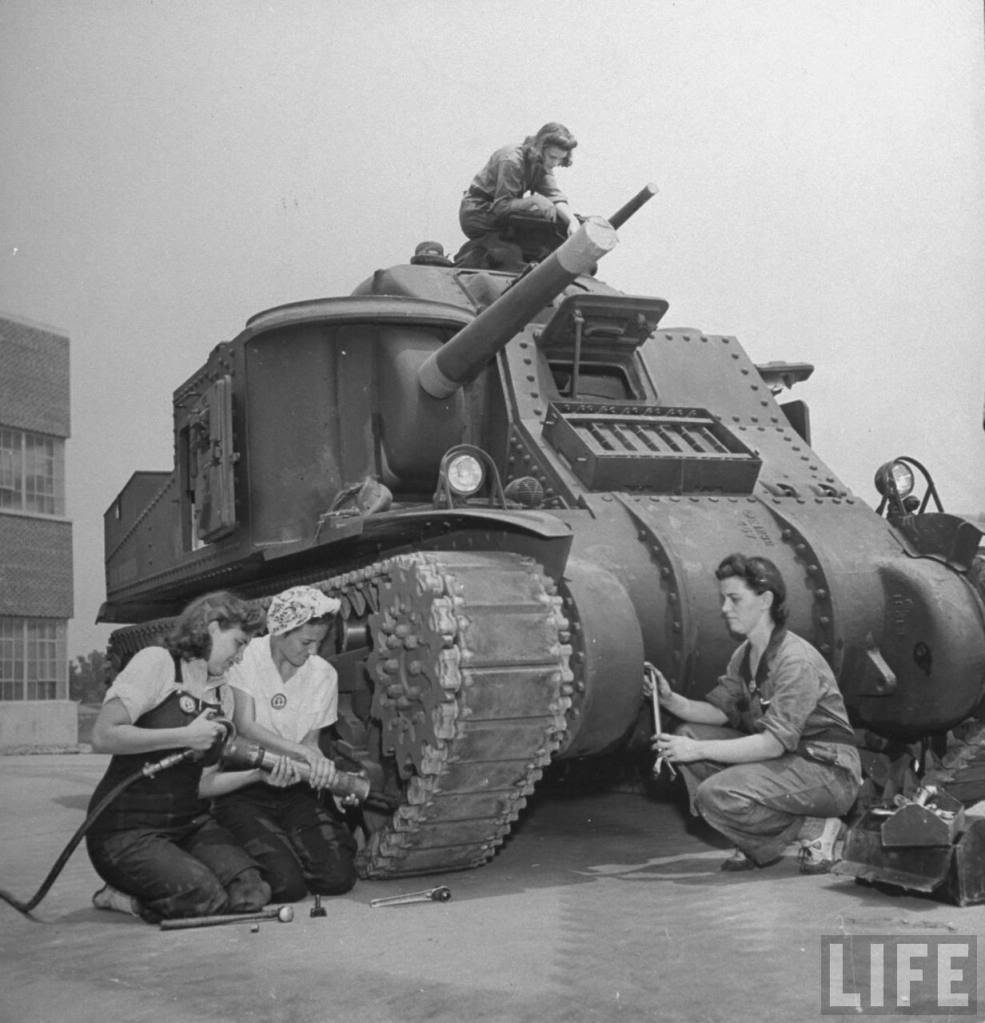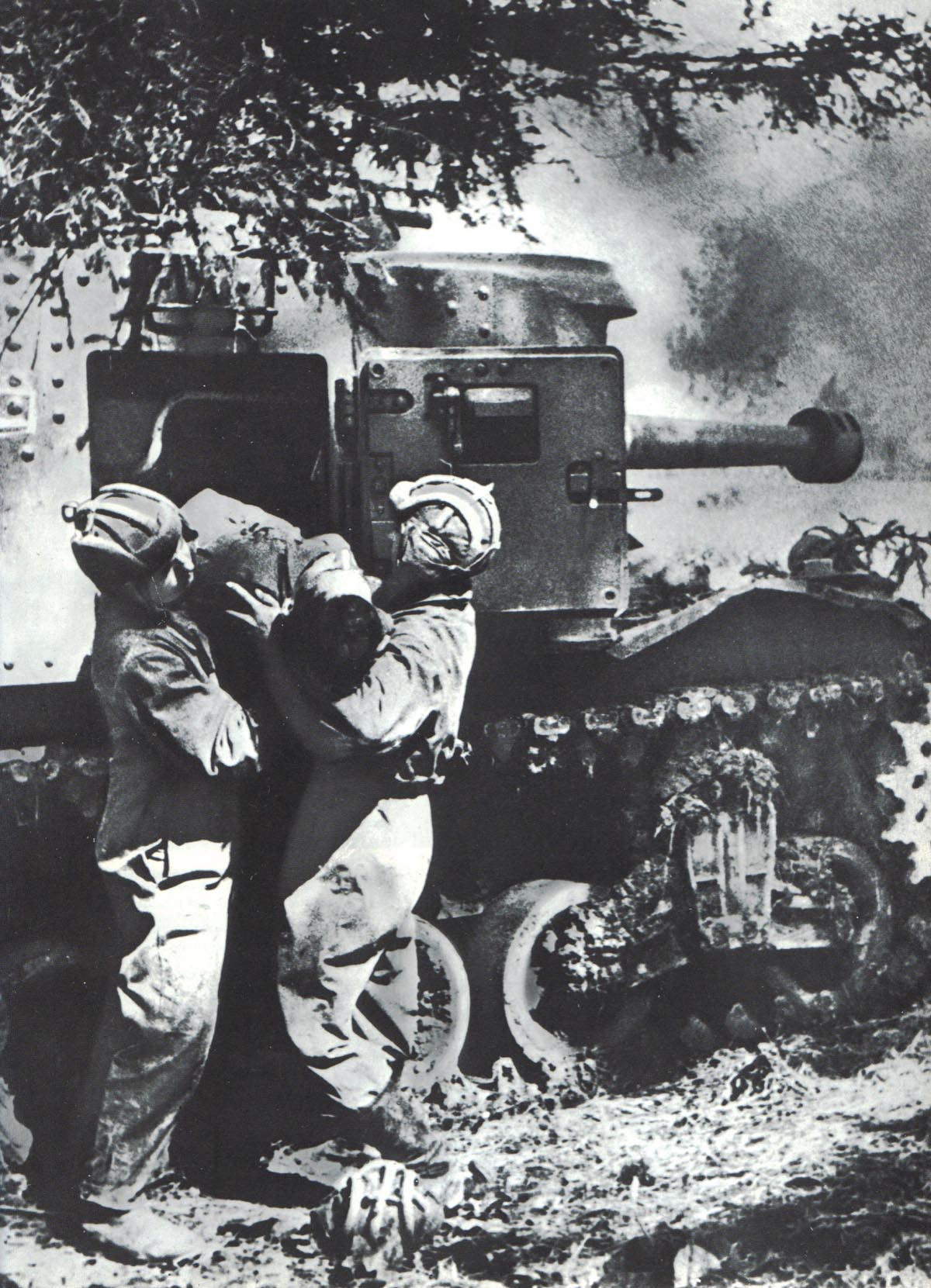Basic Sherman History: The combat RV, AKA the M3 Lee. The Tank that just gets no respect

To really know why the Sherman was designed the way it was, you have to know about the M3 Lee. The M3 was the predecessor of the M4. It was based on M2 medium, the US Army’s only foray into modern medium tank design at the time, and modifying it was the fastest way a tank could be designed with a 75 mm M3 canon fitted. The US lacked the jigs to make a turret ring big enough for a turret to house a gun that large. The Lee went into production as a stop-gap while the turret ring problem was being solved and the M4 design was being finished. By putting the gun in a sponson mount, and beefing up the rest of the tank, and removing a machine gun or two, they had a viable tank they could put into production right then. It had become clear to the US Army that the 75mm cannon would be needed based on feedback from the British, and observations of how the war was developing in Europe.

One of the reasons for the reliability of the M4 design was the use of parts that started their design evolution in the M2 medium and were improved through the M3 production run. Over the life of M3 Lee and M4 Sherman, the designs were continually improved as well, so a final production, M3, or M4A1, bared little resemblance to an initial production M3 or M4A1, yet many parts would still interchange. This is one of the reasons the Israelis had so much success updating the Sherman to the M50 and M51, these tanks used early small hatch hulls, that never had HVSS suspension installed, but the hulls took the updated suspension with few problems. The U.S. Also produced so many spare parts for the Sherman, keeping them working post was was easy well into the 70s.
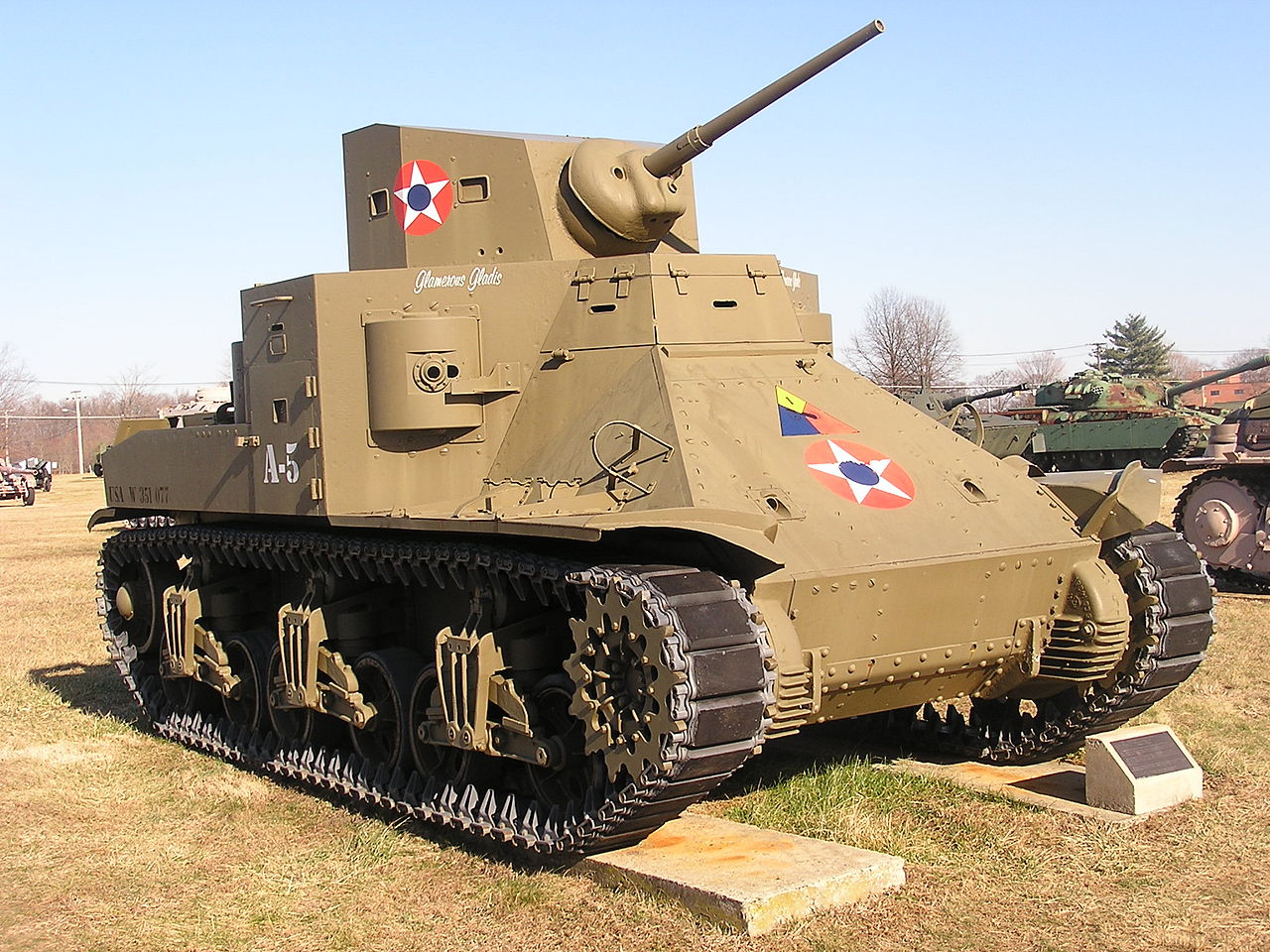

When the Lee went into production, the main complaint was it was far from an ideal design, and the 75mm gun was hard to use, everyone knew it. They knew it from the start. It still outclassed the German and Italian armor it would face, and its dual purpose 75mm gun would allow it to engage AT guns with much more success than most of the British tanks it replaced. It was reliable, and well-liked by its users, and produced in pretty large numbers. When the British got enough Shermans, the Lees and Grants were sent to the Far East and saw use until the end of the war, fighting the Japanese. The Lee excelled at infantry support since it had a 37mm cannon that could fire canister rounds, along with the 75mm gun and a lot of machine guns. Many of these Lee tanks ended up in Australia after the war. I make the argument, the Lee was the better Jungle tank, between it and the Sherman.
Another universal complaint about the Lee was once all the guns were firing, there was not enough ventilation, and the crew, if forced to stay inside for long periods operating the weapons had even been reported to pass out on occasion. The Sherman would all more armored ventilators, but still not enough, until the later versions for the best in crew comfort. No tank of the era could dissipate the heat of the desert or tropics.

The Lee was a mix of high and low technology. It had direct vision ports, tweaking the armor, but both guns were stabilized. The stabilization technology was primitive, but it was still cutting edge for the time, and space-age technology to the Germans, who had nothing like it. It had a battery charging gas-powered Generator and a five-speed synchronized gearbox. Some variants were used to develop welding the armor plates, that used on the later M4 series.
All the improved engines that were used in the M4 series were testing on the M3 Lee first. The improved heavy-duty suspension was developed on the Lee to deal with the added weight of the A57 engine. Had they waited for the Sherman design to be ready, none of these things would have been developed first.
Lee variants: The Combat RV
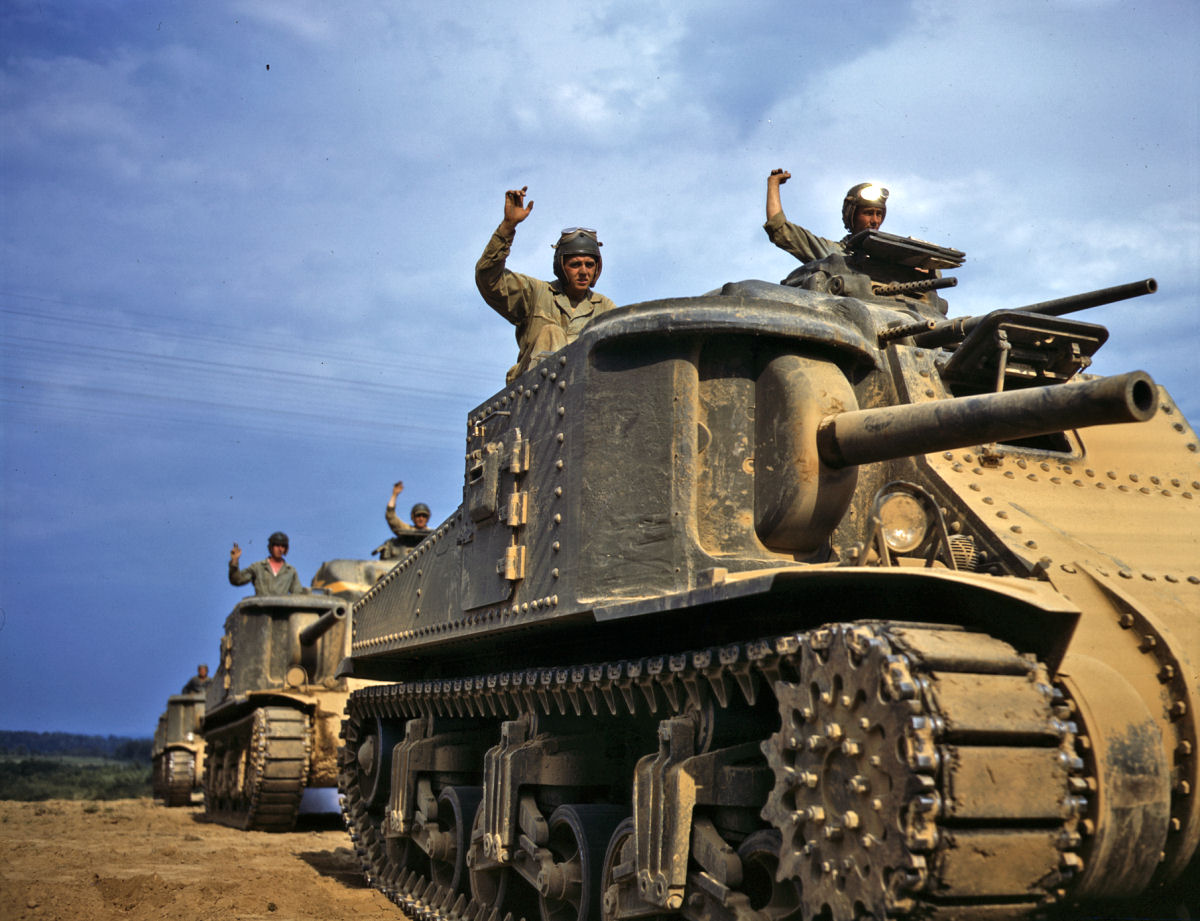
M3 Lee: The First Combat Ready American Medium
This was the first version of the tank and used a riveted hull with the R975 radial engine powering it, the suspension and tracks were very similar to the M2 medium. Early production tanks had an M2 75mm instead of the improved M3 gun. These tanks had a counterweight mounted on the shorter barrel but still had the stabilizer. All Lees had a turret with a 37mm M5 gun. The early production version had two, hull-mounted, fixed .30 caliber machine guns, another mounted coaxially with the 37mm gun, and another in a small turret mounted on top of the 37mm turret for the commander. The fixed hull guns were removed in service and the holes plugged.

They built nearly 5000 of these tanks. The M3 was improved on the production line with things like the removal of hull machine guns, and hull side doors. The mini turret mounted M1919A4 was not a popular feature, and was hard to use, but it remained on all Lees and were only deleted from the Grant version produced exclusively for the British.

If this version had a major flaw, it would be the riveted armor plates could shed rivets on the inside of the tank and these rivets bounced around like a bullet. This was bad for the crew, but, rarely resulted in a knocked out tank. A field fix for this was welding the rivets in place on the interior of the tank. Most of the M3 Lees produced went to the British. 4924 produced.
I’ve read other sources that said the Lee and Grant tanks did not shed rivets and this was a myth.

M3A1 Lee: A Lee, But with a Cast Hull
This version of the Lee had a cast hull and R975 radial power. It was really the same as the base Lee in most respects including improvements. 300 built. These cast hull tanks have a very odd and distinctive look. They look almost like an M3 Lee was melted. This hull casting was huge and more complicated than the M4A1 casting. Most of these tanks were used in the United States for training. 300 produced.

M3A2 Lee: A Lee, Only Welded
This Lee had a welded hull and the R975 powering it. 12 built. This version was more of a ‘proof of concept’ on welding a hull than anything. This type of hull construction was used on most Sherman Models.
M3A3 Lee: A Lee With The 6046
Another welded hull but this one powered by the GM 6046 Twin Diesel. 322 built, like the base Lee, with the same improvements. This is the first vehicle the 6046 was used in, and most of the bugs were worked out on this model. 322 built. Some of the problems with the motor were air cleaners that needed cleaning too often and a complicated oiling system. Fuel injector changes were needed to run with Soviet fuels. Crews preferred it when running properly, to the R975, since it had more low-end torque.
M3A4 Lee: A Lee With The Fantastic A-57 Motor
This version had a riveted hull and was powered by the A-57 multibank motor. This motor was so large the hull had to be stretched for it to fit; it also required a bulge in the top and bottom of the hull to fit the cooling fan. They also had to beef up the suspension, and the suspension units designed for this would become standard units on the Sherman. This would be the only version of the Lee with the improved bolt on offset return roller VVSS, otherwise, this tank was very much like the base M3. 109 built. This motor’s bugs were worked out on this tank and would go on to power a large chunk of Sherman production.

M3A5 Grant: A Diesel Lee, Made For the Brits, with a New Name and Turret
Another welded hull, powered by the GM 6046 Twin diesel with a new bigger turret to house British radios. 591 built. This new turret deleted the small machine gun turret on the roof of the 37mm turret. This version was used only by the British. The famous General Montgomery’s personal M3A5 is on display in England, at the Imperial War Museum in London. 591 produced.

. . .
The majority of Lee and all Grants saw service with the British, and many Lees went to the Soviet Union. They were generally well-liked by both nations and more reliable than most of their British and German contemporaries. These tanks were better than the enemy tanks they faced until the Germans up-gunned the Panzer IV series. When they were replaced with M4s of various types the M3 were shipped to the Far East for use in Burma and New Guinea, where they would be used until the end of the war. The Japanese had no tank that could take on a Lee, let alone a Sherman. Using soldiers as suicide bombers, and mines still worked though, there was also a pesky 47mm AT gun, but it was rare. The 37mm gun firing canister rounds were nice to have in thick vegetation.
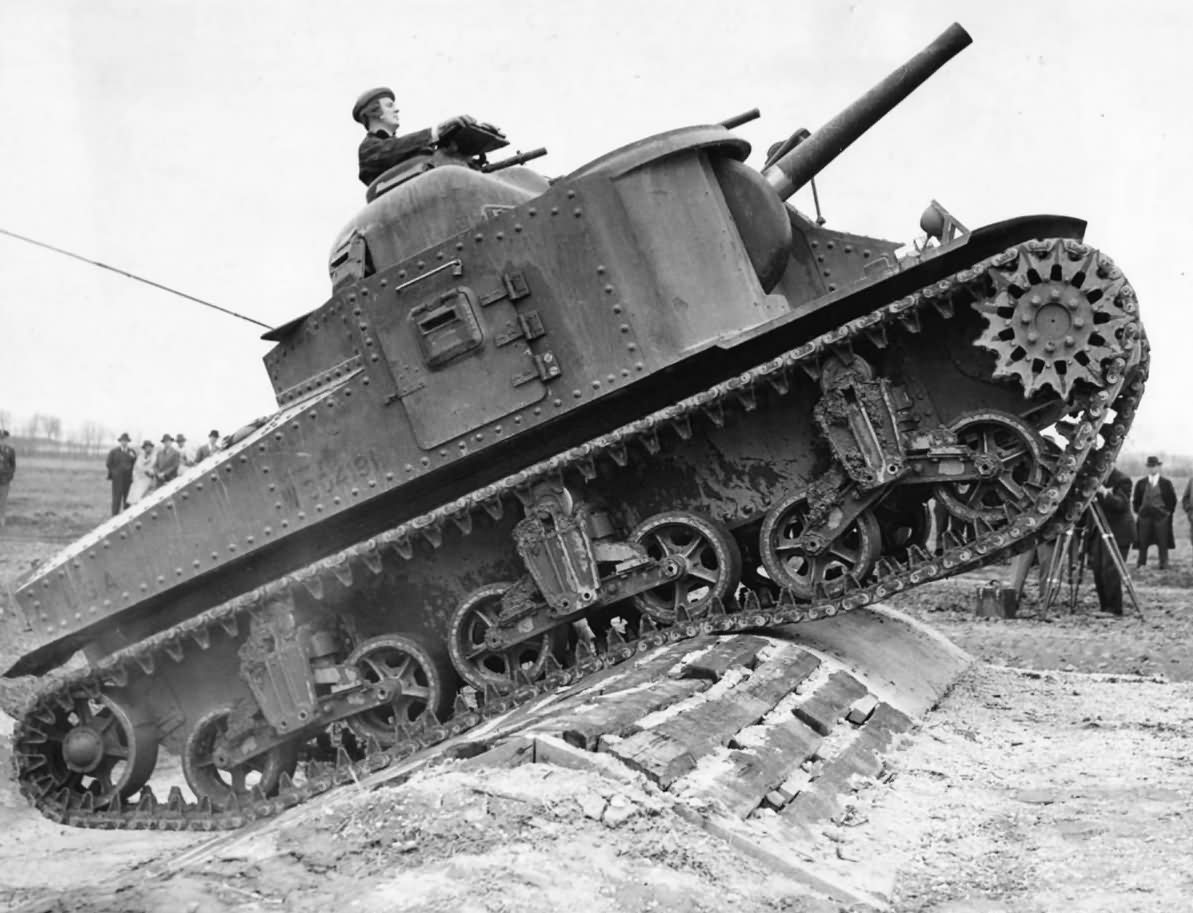
The M3 Lee saw limited use in the US Army’s hands seeing combat in North Africa. The 1st Armored Division was stripped of its M4s and M4A1 tanks right before Torch to replace British Tank losses in North Africa. There were not enough Shermans to re-equip the 1st, so they issued M3 Lees, and they would be used through the entire Campaign. A few were used in the PTO by the US. The British and Australians used the M3 series in the far east and Pacific until the end of the war.
The Sherman owes its success to the lessons learned from producing the Lee and from its use in combat. The 75mm gun and automotive systems, even the more complicated ones, would be perfected in the Lee and re-used in M4. The Sherman only had one motor not tested in the Lee first. Many of the Lee variants were produced at the same time and the numbering system was more to distinguish between the hull and engine types, not to model progression like in aircraft, and other tanks. This practice was carried over to the M4 series as were all the engines used in the Lee.
Many people familiar with the way the United States designated aircraft during the war figure it was carried over to tanks and think an M3A1 was an improved M3, and an M3A2 was an improved A1. This is not the case, as many of these versions were produced at the same time, and they all received the same sets of improvements, though some factories took longer to implement things than others though.
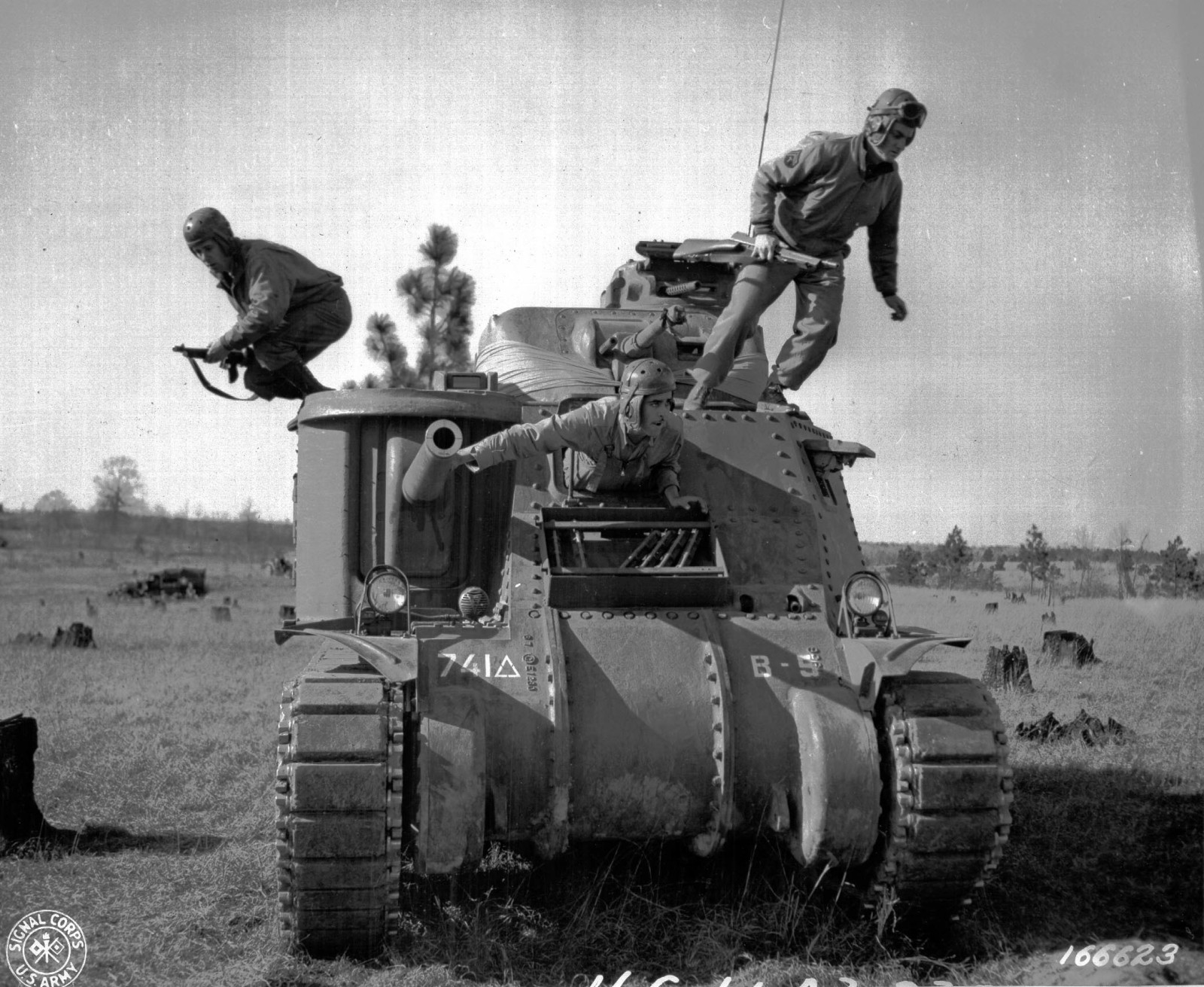
The M4A1 went into production as soon as the jigs for the turret ring were produced and ready to be used. Production actually started on the cast hull M4A1 first, with the welded M4A2 following right behind it. Like the M3 Lee, there were many versions of the Sherman in production at the same time. There are many photos of Lee’s coming off the production line, with Shermans in the line right behind the last Lee, so there was no real gap in production between the two tanks at most of the factories.
The M3 Lee, in-spite of getting the job done, just gets no respect. It’s often at the top of worst tank lists and gets made fun of for having all these flaws, that had to work around other than making sure it was fixed in the M4 series. Its combat record, role in developing the M4, and service life all deserve far more respect than they get.

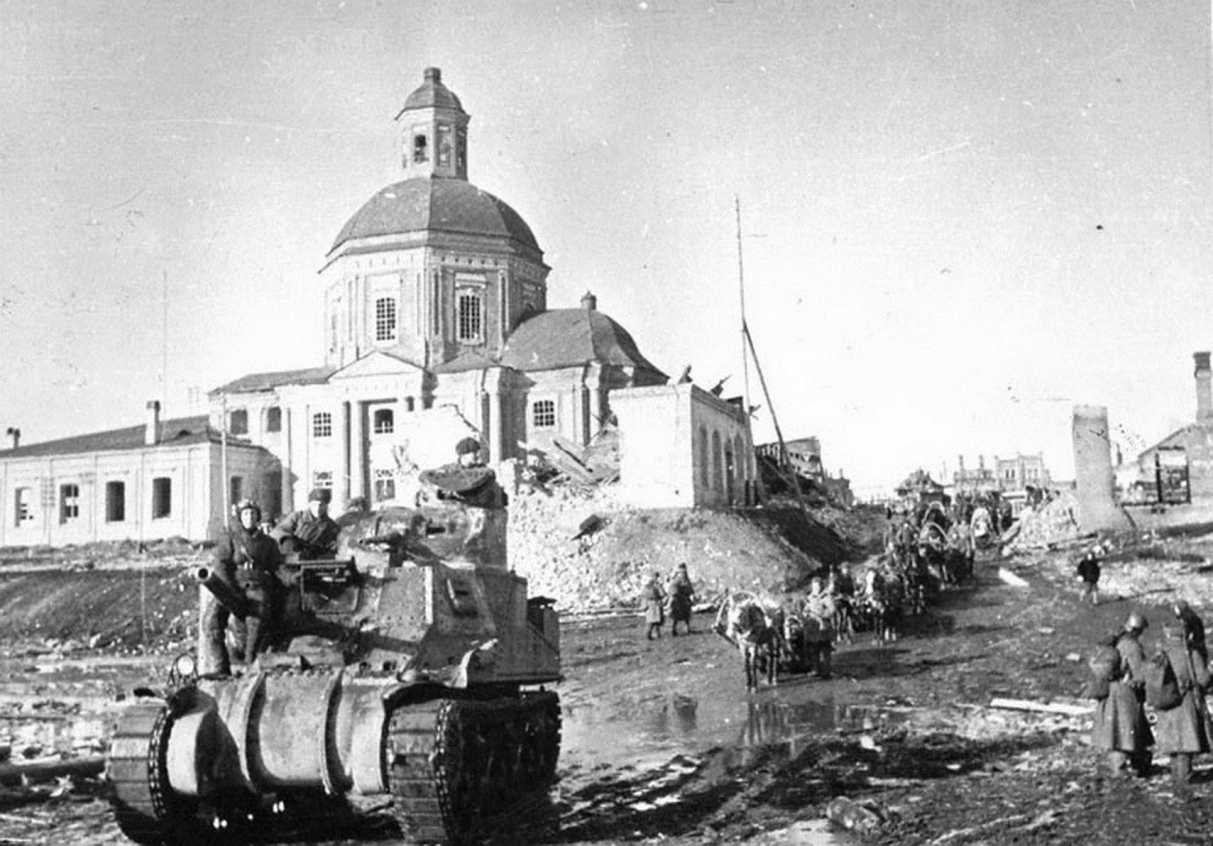
Sources: Armored Thunderbolt by Zaloga, Sherman by Hunnicutt, TM9-750

